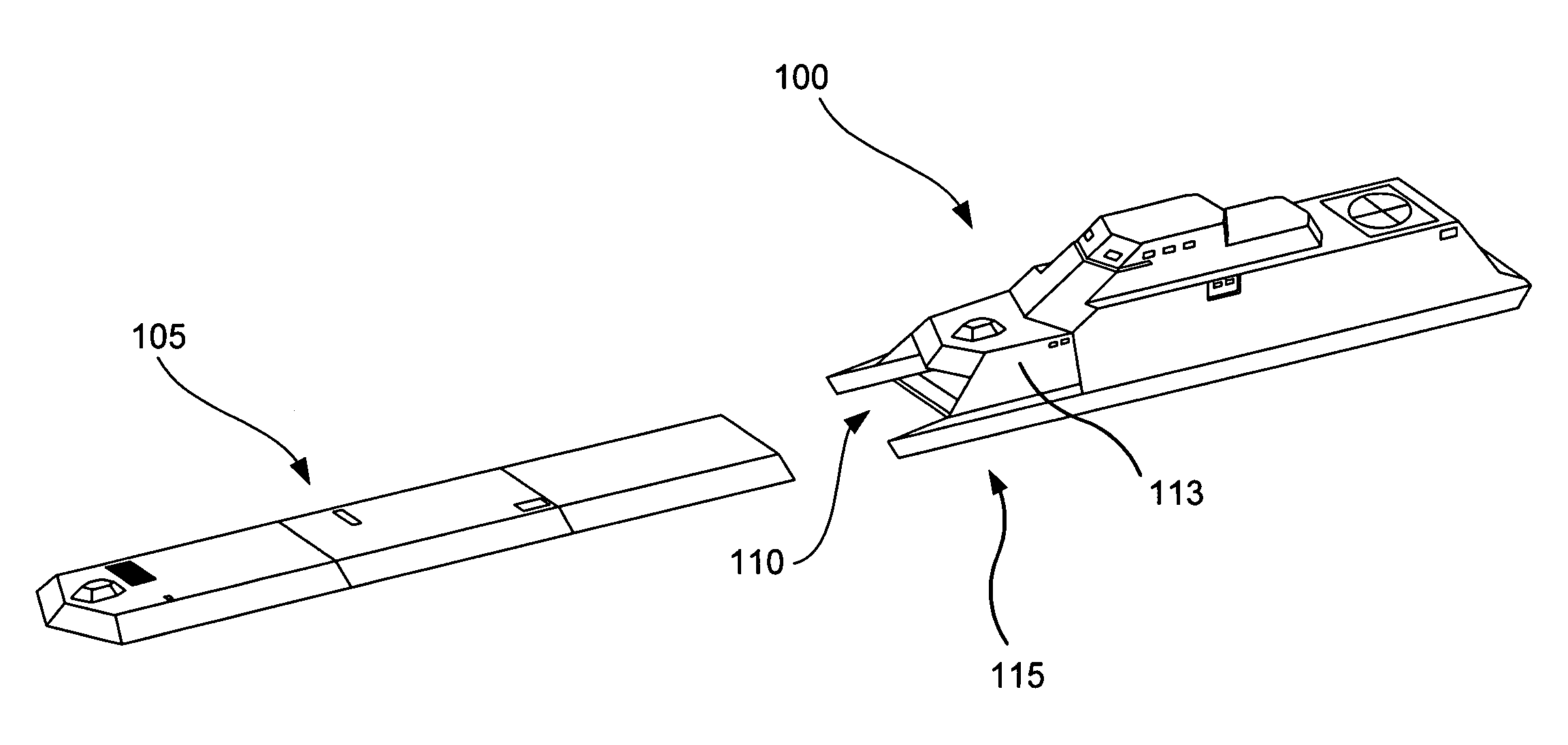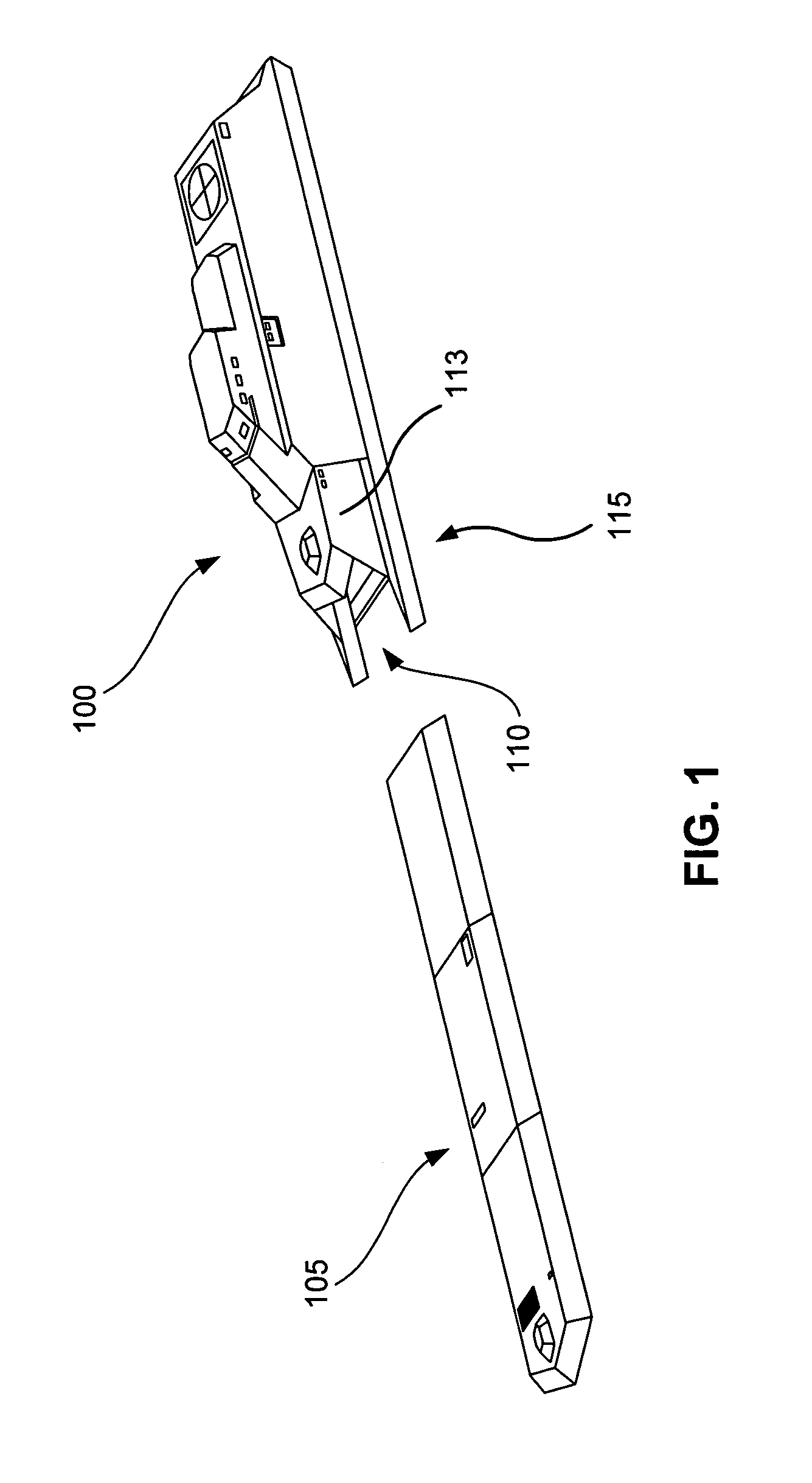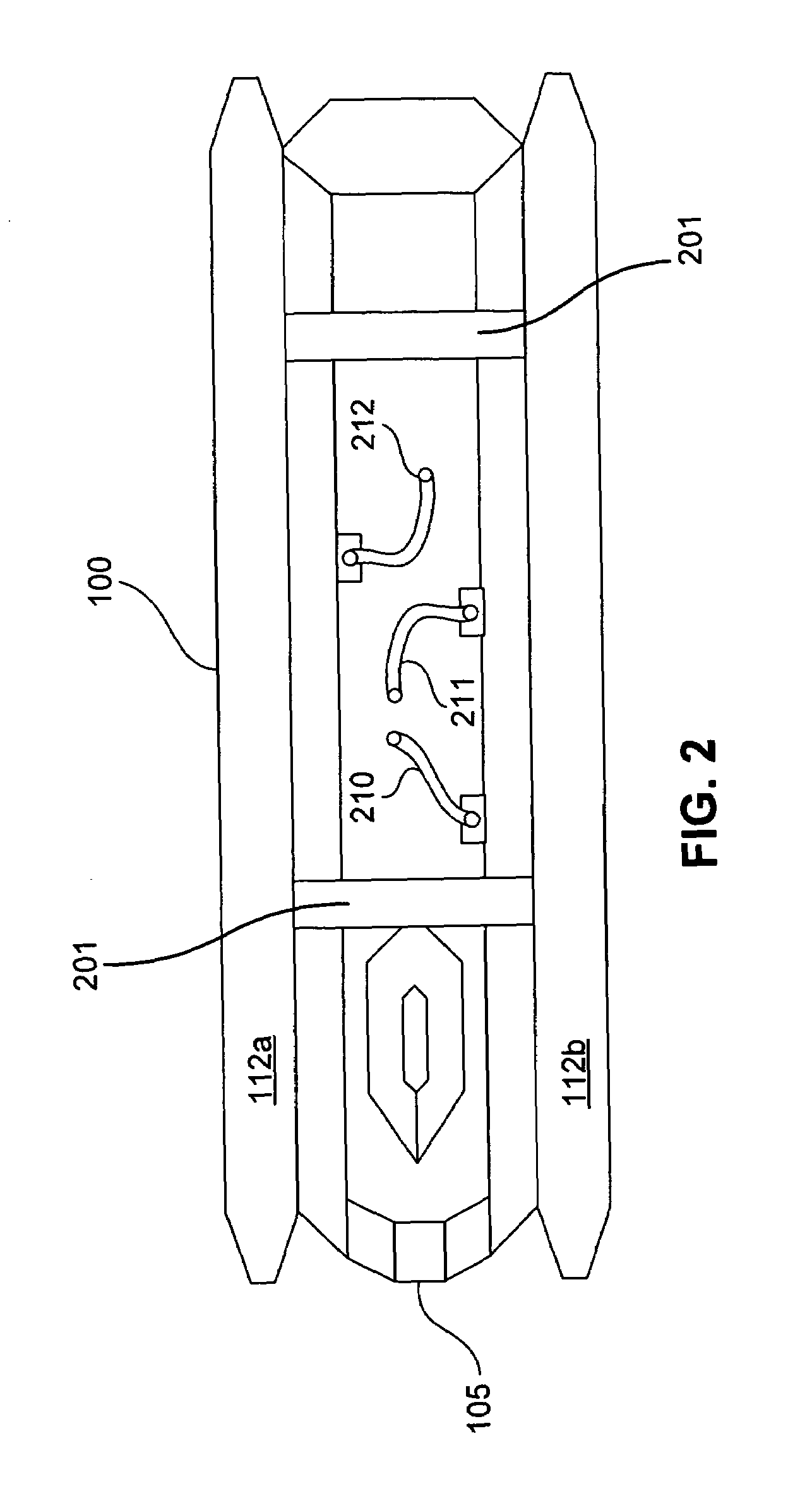Method and system for mission module swapping in a vessel
a technology for mission modules and ships, applied in special purpose vessels, vessel construction, passenger handling apparatus, etc., can solve the problems of incompatibility with another type of mission, inefficient hulls of multi-mission ships, and inability to meet the needs of multi-mission ships, so as to achieve quick and easy swapping and provide the ship with different mission capabilities.
- Summary
- Abstract
- Description
- Claims
- Application Information
AI Technical Summary
Benefits of technology
Problems solved by technology
Method used
Image
Examples
Embodiment Construction
[0016]FIG. 1 is an isometric view diagram of a multi-mission ship 100 and an associated mission module 105 according to an embodiment of the invention. The ship 100 may be a monohull, a multihull (such as a catamaran, Trimaran, Pentamaran, etc.), a small-waterplane-area twin hull (SWATH), a multi-mode hull such as discussed gelow in conjunction with FIGS. 5A–5D, or other type of hullform. The ship 100 includes a hull structure or frame 115 that is designed to accept one or more mission modules 105 (only one shown in FIG. 1). The frame 115 includes two lower hull portions 112a and 112b and associated interconnecting structures (called struts hereinafter) that extend down from a main body 113, (one strut and lower hull 112a extending down from the port side and one strut and lower hull 112b extending down from the starboard side) such that a receptacle or bay 110 is enclosed by the struts and lower hulls 112a and 112b and the main body 113. The bay 110 creates a cavity such that water...
PUM
 Login to View More
Login to View More Abstract
Description
Claims
Application Information
 Login to View More
Login to View More - R&D
- Intellectual Property
- Life Sciences
- Materials
- Tech Scout
- Unparalleled Data Quality
- Higher Quality Content
- 60% Fewer Hallucinations
Browse by: Latest US Patents, China's latest patents, Technical Efficacy Thesaurus, Application Domain, Technology Topic, Popular Technical Reports.
© 2025 PatSnap. All rights reserved.Legal|Privacy policy|Modern Slavery Act Transparency Statement|Sitemap|About US| Contact US: help@patsnap.com



